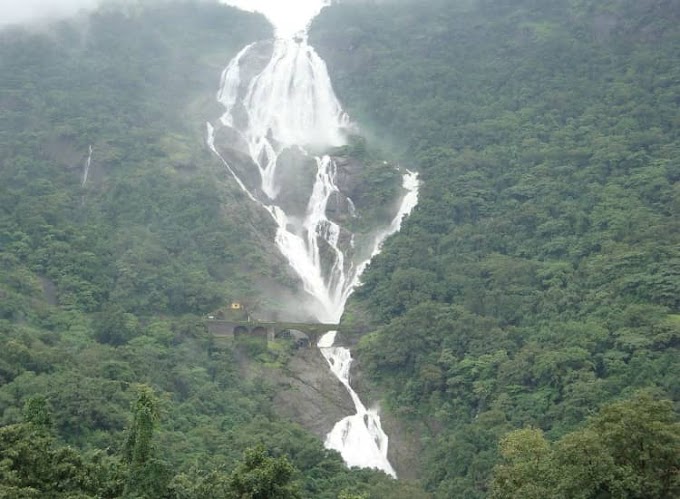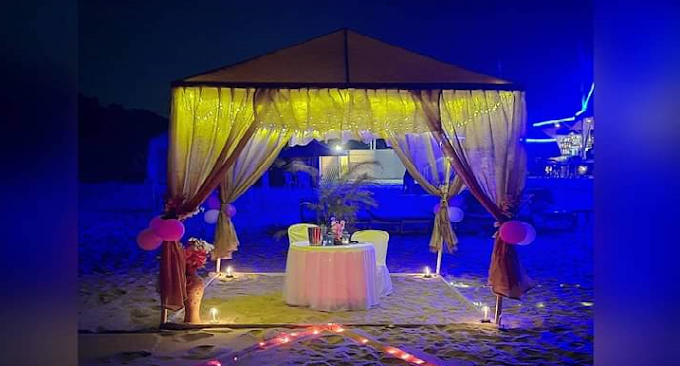- Fort Aguada
- Cabo da rama
- Chapora (Also Known as Dil Chahta Hai Fort)
- Terekhol
FORT AGUADA
Strategically located at the estuary of the river Mandovi, this fort was constructed in 1612 as a guard against invasions from the Dutch and the Marathas. The walls of this fort are 5 metres high and 1.3 metres wide. Little surprise then that this remains to be the only fort that was not conquered by any invaders during the 450 yearlong rule of the Portuguese empire.
The area around the fort housed a large well and a number of springs that provided fresh drinking water to the voyagers that arrived by ship. "Agua" in Portuguese means water, thus the fort derived its name "Aguada" to denote a place where water is accumulated.
An interesting feature in the precinct of the fort is a 13 metre high lighthouse. This lighthouse, built in 1864, initially used an oil lamp. It was later renovated and modernised in 1976. This lighthouse was home to a gigantic bell that was retrieved from amongst the ruins of the St. Augustus monastery at Old Goa. However, the bell has now been moved to the Our Lady of Immaculate Conception church at Panaji. Though the entire fort is no longer intact, some buildings that arestill in good shape have been converted into a prison. Interestingly, it happens to be the largest prison in Goa.
En route to the fort, one comes across the church of St. Lawrence, the saint of the sailors. The Portuguese used to build churches on the outskirts of the forts to prevent the enemy from firing at a close range.
CABO DA RAMA
Situated on the southern coast of Goa, this fort has been under the regime of various rulers until the Portuguese took it over from the Raja of Sonda in 1763. After taking charge of the fort, the Portuguese rebuilt it but did not put it to much use thereafter. It came under the British rule from 1797 to 1802 and then again from 1803 to 1813. After that, not much attention was paid to the fort. The remains of the fort were then used as a prison until 1955.
Though the church within the fort is still in use, there is little of the fort that remains to be seen today. However, the view from the headland is breathtaking.Legend has it that the fort has derived its name from Lord Rama who remained here for a while when he was in exile, along with his wife, Sita.
CHAPORA
The Portuguese had secured their rule in Goa but the threat from the Muslim and Maratha rulers persisted. To protect themselves from this risk, the Portuguese built the Chapora fort in 1617. However, unlike the Aguada fort, this fort did not remain unconquered.
In 1684, the Portuguese troops surrendered to the courageous Maratha ruler, Sambhaji. But the locals were not too pleased with this.They had a number of conflicts with the Marathas and finally in 1717, the Marathas withdrew their force. The Portuguese then took over again and rebuilt the fort. The new structure of the fort was equipped with underground tunnels that ensured a safe getaway in case of an emergency.
But this glory was not to remain. Yet again in 1739 the Marathas captured the Chapora fort. However, two years later, in 1941, the Portuguese regained the fort when the northern taluka of Pednem was handed over to them. In 1892, the Portuguese completely abandoned the fort. What remains today are only ruins but one does manage to see the heads of the escape tunnels built by the Portuguese. Though, there isn't much to see, the history lingers on.
TEREKHOL
Often mis-spelt as tirakol or tirakhol, Situated on the Terekhol River, this fort lies on the northern tip of Goa. Maharaja Khem Sawant Bhonsle built this fort in the 17th century. It was then rebuilt in 1764 after the Portuguese Viceroy Dom Pedro Miguel de Almeida captured it. However, Terekhol was legally incorporated into Goa only in 1788.
In 1825, Dr. Bernado Peres da Silva, a Goan governor general used the fort as a base for an armed rebellion against the Portuguese. The outcome however, was not very fruitful and the Portuguese took over the fort once again.
The remains of the fort have now been converted into a hotel, the Terekhol Fort Heritage. However, the St. Anthony's church inside the fort still remains. But it is not open to the general public except on certain occasions such as the annual feast that is usually held some time in May.
Never Miss This Detailed Information about Goa before Visit
- Beaches in GOA - Trip to Pleasure | North Goa Beaches | South Goa Beaches
- Churches In Goa
- 3 Best Wildlife Sanctuaries in GOA
- NIGHTLIFE IN GOA - NORTH GOA PUBS AND BARS
- NIGHT LIFE IN GOA - SOUTH GOA PUBS AND BARS
- NIGHT MARKET IN GOA
- Temple In Goa
- CASINOs in GOA - TRY YOUR LUCK at Deltin Royale, Deltin Jaqk and more amazing casinos in Goa
- 11 Top-Rated Tourist Attractions in Goa | 4 Days Detailed itinerary








8 Comments
Loved your blog, thanks for sharing such blog. Waiting for more such post. Looking for a car rental in Goa , Visit :
ReplyDeleteCar Rental in Vasco Goa
Car Rental in Goa
Self Drive Cars in Goa
Thank You.
DeleteIt's a great blog, waiting for more such blogs. If someone is Looking for Bike Rental Services in Goa, visit on
ReplyDeleteBike Rental in Goa
Rent a Bike Goa
Bike Rental in Goa
Please read all articles.
DeleteWhat you called tuna fish in konkani or goa?
DeleteThank a lot for this post that was very interesting. Keep posting like those amazing posts, this is really awesome :)
ReplyDeleteLooking For Car Rental Goa, Visit
Car Rental in Goa
Show your business on offer pages please.
DeleteLet me know What you called tuna fish in konkani?
DeleteThank you.